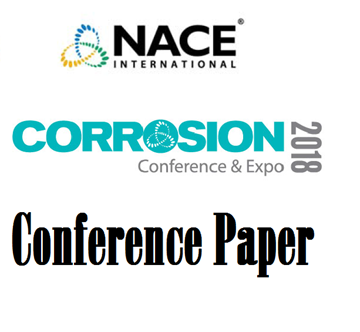Corrosion and corrosion inhibitor qualification testing has been the subject of many publications over the years, with various guidelines and in-house protocols produced. This has led to a rather large set of test approaches for the qualification of corrosion inhibitors (CIs) for application in oil and gas production facilities.
For challenging conditions, including severe downhole conditions, final testing is often performed via specialized autoclaves or high-pressure flow loops to allow tests to be conducted under conditions as close to those pertaining in the field: T, P, pCO2 and pH2S (or more realistically, fugacity of CO2 and H2S), and as close as can be achieved to the field hydrodynamics.
Product Number:
51323-19243-SG
Author:
Hunter Thomson, Rodney Madjitey, Caroline Simpson, Dario M. Frigo, and Gordon Graham
Publication Date:
2023
$0.00
$20.00
$20.00
Although there remain many differences between the approaches used in different laboratories, corrosion inhibitor (CI) qualification techniques for sweet or mildly sour conditions have largely become agreed and to some degree standardized. That said, the specific requirements for different operators vary in terms of the specific nature of the test (e.g., electrochemical vs weight loss), the duration of the test (e.g., 12 hours to > 500 hours), the requirement for pre-corrosion and its extent. Nonetheless, the protocols involved are generally accepted and when conducted properly lead to effective inhibitor qualification.
However, the qualification of CI for sour conditions, or more specifically conditions with high mol% CO2 and high mol% H2S, is significantly more challenging. This is usually attributed to the test conditions employed in laboratories, which do not necessarily lead to corrosion behavior representative of the worst-case corrosion condition of the field. Unlike for sweet corrosion, this is not necessarily assisted by current mathematical models to predict likely worst-case corrosion conditions.
When testing under the apparently harshest conditions (determined by considering sweet corrosion), very protective iron sulfide films may form, resulting in low corrosion rates even in the absence of CI (i.e., control tests), rendering chemical selection and qualification meaningless unless the inhibitor interferes with the protective film, resulting in enhanced corrosion and/or pitting. On the other hand, under other conditions, which may not be at first sight worst case, high general corrosion rates may be achieved unexpectedly, e.g., when conditions prevent the formation of persistent protective films. This means that conditions for laboratory CI qualification must be selected with even more care than usual to ensure that the worst-case corrosion scenario representative of actual field condition has been encompassed in the testing.
This paper presents results from tests conducted at high-CO2/high-H2S conditions and shows the challenges that small changes in test conditions can have on the performance and ranking of CIs. Also, the paper demonstrates how more significant optimization of the base-line test conditions may be required, often moving away from the perceived “worst-case condition” indicated by far-from-perfect prediction tools, and instead employing optimization protocols, which are recently adopted approaches to rationalize design conditions to allow effective CI qualification under high CO2/high H2S conditions.




